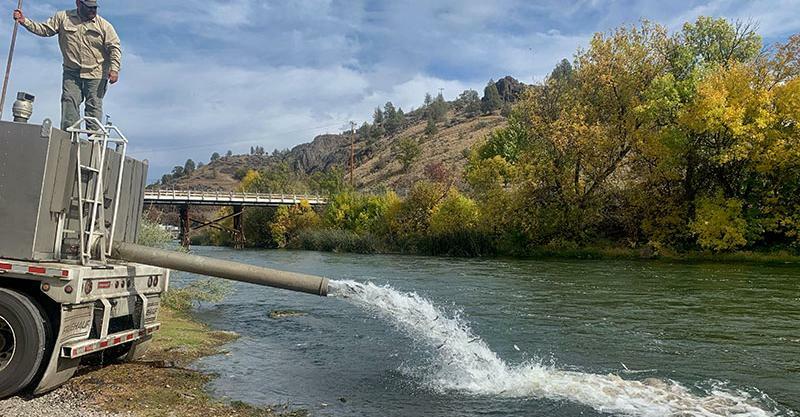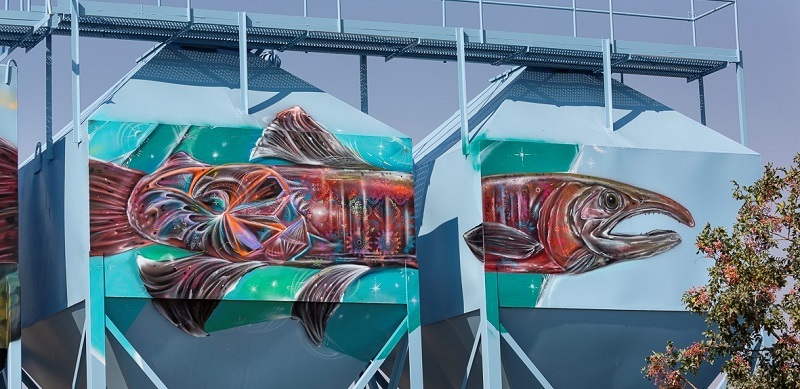Klamath River - Middle Fish Report for 11-19-2021
CDFW Saves More Than 2 Million Chinook Salmon From Drought; Begins Releasing Fish into Klamath River as Conditions Improve
Klamath River - Middle

by California Department of Fish & Wildlife
11-19-2021
Website
The California Department of Fish and Wildlife (CDFW) has begun releasing juvenile fall-run Chinook salmon into the Klamath River now that river conditions have improved with cooler temperatures and increased flows that give the young salmon their best chance at survival and reaching the Pacific Ocean.
More than 2 million baby Chinook salmon that were hatched in early 2021 at CDFW’s Iron Gate Fish Hatchery in Siskiyou County were held over the summer at three different CDFW facilities, including 1 million fish trucked to the Trinity River Hatchery through Redding in triple-digit heat. All three groups of fish did exceptionally well over the summer and thrived despite challenging circumstances.
Drought conditions impacting the Klamath River – including a disease outbreak – would have killed about 90 percent of the young fish according to scientific projections, had those fish been released this past spring as is the standard practice.
CDFW so far has released into the Klamath River the 1.1 million juvenile Chinook salmon held over the summer at the Iron Gate Fish Hatchery and at a nearby satellite facility at Fall Creek. Those releases provide room and sufficient water quality for the 1 million fish relocated to the Trinity River Hatchery to return to Iron Gate. This group has spent several weeks at Iron Gate to reacclimate to the Klamath River and will be released later this month.
“Dozens of CDFW staff worked diligently over several months at the three locations in a united effort to save these fish that would have otherwise perished,” said Dr. Mark Clifford, hatchery senior environmental scientist for CDFW’s Northern Region. “Over 2 million healthy Chinook salmon are on their way to the Pacific Ocean that will ultimately benefit commercial, tribal and recreational fisheries and will retain the intrinsic value of these fish and their genetics for the Klamath River population.”
Four Klamath River dams are slated for removal in coming years, the largest dam removal undertaking in U.S. history. The removal is expected to restore fish access to historic salmon habitat in several rivers and tributaries connected to the upper Klamath River above the dams. The juvenile fish being released this year could be the first salmon to return to a new Klamath River after their life in the ocean and find miles of additional spawning habitat and contribute to future generations of wild fish.
CDFW thanks its partners for their time and expertise in working through this difficult and unprecedented situation. These partners include the Karuk Tribe, the Yurok Tribe, the Hoopa Valley Tribe, the U.S. Fish and Wildlife Service, the Oregon Department of Fish and Wildlife, the Klamath Tribes, the U.S. Bureau of Reclamation and NOAA Fisheries.
More Reports
Recreational Dungeness Crab Fishery Opens November 6 Under New Regulations, Shellfish Safety Notification for Sonoma/Mendocino County Line t

11-5-2021
The recreational take of Dungeness crab using crab traps, hoop nets and snares is allowed starting tomorrow, Nov. 6, 2021,...... Read More
Nimbus Fish Hatchery to Increase Production of Chinook Salmon by 500,000 Fish, Further Experiment with New Release Sites

11-2-2021
A new mural adorns the fish feed bins at the Nimbus Fish Hatchery in Sacramento County. CDFW photo by George Gilmore. The...... Read More

Website Hosting and Design provided by TECK.net